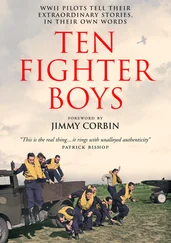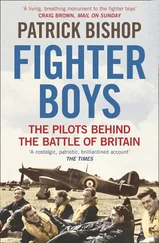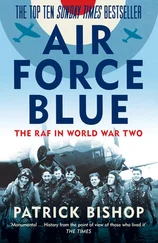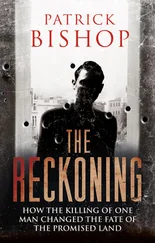He was tall, bony, with mournful eyes that seemed to search for faults and slights. His personality was similarly angular: quarrelsome, morose and dissatisfied, ill at ease in the genial atmosphere of mess and gymkhana club. By 1912 it was clear that his career was going nowhere. He was approaching forty, unmarried and not much loved. His salvation came in a letter from one of his few friends, Captain Eustace Loraine, who was learning to fly at the RFC aviation school on Salisbury Plain. ‘You’ve no idea what you’re missing,’ Loraine wrote excitedly. ‘Come and see men crawling like ants.’ 3
Trenchard was not a natural pilot. His tall, long-legged frame looked ridiculous crammed into the narrow seats of the primitive Blériots and Farmans that were used to give instruction to trainees. What fascinated him was not flying itself, but its potential. He sensed he had finally made his rendezvous with destiny and joined the RFC. Three years later, in August 1915, he became its commander.
Trenchard tried to make the RFC indispensable, straining to satisfy every demand made on it by the army no matter how unreasonable, or how limited his resources. The aim was to obtain and maintain control of the air over the trenches. The balance of power shifted constantly as the technological and tactical advantage swung back and forth between the sides. The level of fighting was kept high. The RFC’s main business was reconnaissance. Trenchard decided early on that the best way of defending the spotter aircraft and ensuring a steady flow of intelligence to the army was to go on the offensive, reaching over the lines into enemy air space. This was, at best, a logical response to the three-dimensional nature of aerial warfare in which there were no fixed lines to defend and to wait for the enemy to attack was to cede a moral advantage. At times, though, it could seem like an echo of the numb thinking of the terrestrial generals, who, literally stuck in the mud, threw more and more troops into futile attacks because they could think of nothing better to do.
Trenchard did not hesitate to sacrifice men to fulfil the RFC’s obligations to the army and maintain the momentum of aggression. The losses among pilots during the great offensives of 1916 and 1917 came close, in proportionate terms, to matching those on the ground. During the Battle of the Somme pilots were in the air for five or six hours a day. The gaps were often filled by novices coming straight from flying school. Cecil Lewis, eighteen years old, was asked by a senior officer when he arrived at No. 1 Aircraft Depot at St Omer how many hours’ flying experience he had.
‘Fourteen hours.’
‘Fourteen! It’s absolutely disgraceful to send pilots overseas with so little flying. You don’t stand a chance…Another fifty hours and you might be quite decent; but fourteen! My God, it’s murder.’ 4
The aeroplanes which carried the war to the Germans became known as fighters. The machines were constantly being refined and improved. These efforts produced steady rather than startling increases in performance. The Bristol Scout, in service in 1915, had a top speed of 86.5 m.p.h. at 10,000 feet, to which level it could climb in twenty-one minutes. The Sopwith Camel, one of the most ubiquitous types in the closing stages of the war, could in ten minutes reach 10,000 feet, where it could travel at 112 m.p.h. Aircraft armaments similarly became heavier and more accurate as interrupter devices were refined to allow bullets to pass through the arc of the propeller.
Fighter pilots came to exemplify the character and spirit of the new air force, even though their role was essentially secondary. They were a godsend to propagandists charged with conjuring romance out of the horror of mechanized warfare. They operated in the clean medium of the air, detached from the vileness of the trenches. The nature of their work made it inevitable that they would be linked to an older, nobler fighting tradition. Some aviators believed this themselves, at least at the beginning. ‘To be alone,’ wrote Cecil Lewis, fresh from flying school, ‘to have your life in your own hands, to use your own skill, single-handed against the enemy. It was like the lists in the Middle Ages, the only sphere in modern warfare where a man saw his adversary and faced him in mortal combat, the only sphere where there was still chivalry and honour.’ 5
What was true was that to be a successful fighter pilot required different qualities from those that made a good infantry officer. In the air you were on your own. The business was entirely new. There was no one to teach it, no textbooks to refer to. To survive, the pilot had to make his own decisions and develop his own tactics. The new air service attracted men who were independent-minded, adventurous, often unusual, sometimes to the point of eccentricity. Among the first to emerge on the British side was Albert Ball, in whom the values of the playing field jostled unhappily with the neurosis of the battlefield. Ball was brought up in a middle-class home in Nottingham where his father hauled himself up the class ladder, starting his working life as a plumber and ending up mayor of the city. He was educated at a local fee-paying school, founded to promote Anglican principles and a sense of patriotic duty. There were cold baths, perpetual exercise and an emphasis on technology.
Like tens of thousands of other young men, he joined up as soon as he was able, and was posted to the infantry. Frustrated at the delay in being sent to the front he took private flying lessons to improve his chances of entering the RFC. Ball fell instantly in love with flying, despite the hazards. ‘It is rotten to see the smashes,’ he wrote in one of his frequent letters home. ‘Yesterday a ripping boy had a smash and when we got up to him he was nearly dead. He had a two-inch piece of wood right through his head and died this morning.’ He added, without apparent irony, that he would be ‘pleased to take you up any time you wish’, if his parents felt like a flip. 6
He arrived in France, now a lieutenant in the RFC, in time for the great Somme offensive. He flew a French Nieuport, one of the new generation of single-seater scouts. His methods marked him out immediately. He would fly straight into packs of enemy aircraft, getting in as close as he could, firing off a Lewis gun at point-blank range, breaking off an inconclusive attack only to change the ammunition drum and bore in again. It was simple, effective and desperately dangerous. He would return from sorties with his machine shredded by enemy fire.
On the ground his behaviour struck his fellow officers as odd. At his first base, Savy Aubigny aerodrome, north-west of Arras, he turned down a billet in the village, preferring first a tent, then a wooden hut he built for himself at the edge of the airfield, two miles from the squadron mess. He sent home for packets of seeds to plant marrows, lettuce, carrots, cress and flowers. He spent hours in the hangars, chatting with the riggers and fitters, making constant adjustments to his aeroplane to improve its capabilities, yet he seemed less interested in flying for its own sake than as a means of fighting. The camaraderie of the mess held little interest for him. Nor did women.
His main relaxation was the violin, which he would play after dinner while walking around a red magnesium flare. Another fellow pilot, Roderic Hill, described him sitting outside his hut, playing his gramophone and brooding. ‘He had but one idea: that was to kill as many Huns as possible, and he gave effect to it with a swiftness and certainty that seemed to most of us uncanny. He nearly always went out alone; in fact he would not let anyone fly with him, and was intolerant of proffered assistance.’ 7
For all his oddness, he was respected. A young New Zealander pilot, Keith Caldwell, saw him as ‘a hero…and he looked the part too; young, alert, ruddy complexion, dark hair and eyes. He was supposed to be a “loner”, but we found him to be friendly…One felt that it could only be a matter of time before he “bought it”, as he was shot about so often.’ 8
Читать дальше












